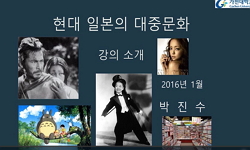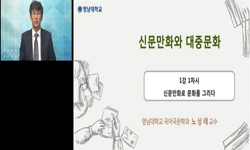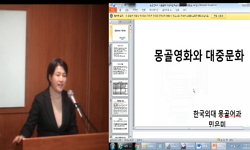'문화란 무엇인가?'라는 질문에 대해 다양한 논의들이 있어왔지만, 그중 리비스주의로 대표되는 문화엘리트주의는 대중문화에 대한 고정관념을 갖게 한 대표적 입장이다. 하지만 문화는 당...
http://chineseinput.net/에서 pinyin(병음)방식으로 중국어를 변환할 수 있습니다.
변환된 중국어를 복사하여 사용하시면 됩니다.
- 中文 을 입력하시려면 zhongwen을 입력하시고 space를누르시면됩니다.
- 北京 을 입력하시려면 beijing을 입력하시고 space를 누르시면 됩니다.
대중문화에서의 미적 체험과 학습 : 대중문화에 대해 '아름다움'을 말할 수 있는가? = Aesthetic Experiences and Learnings in Popular Culture : Can We talk about 'the Aesthetic' Discourse of Popular Culture?
한글로보기부가정보
국문 초록 (Abstract)
'문화란 무엇인가?'라는 질문에 대해 다양한 논의들이 있어왔지만, 그중 리비스주의로 대표되는 문화엘리트주의는 대중문화에 대한 고정관념을 갖게 한 대표적 입장이다. 하지만 문화는 당대 대중이 집합적으로 공유한 생활양식이라 할 수 있다. 문화가 대중의 살아있는 경험으로서의 총체적인 삶의 방식이라 할 때, 대중문화 역시 새롭게 정의될 수 있다. 즉, 대중문화는 대중의 일상 속에서 산업생산의 방식으로, 사회적 힘으로, 정치적 효과와 문화적 권력의 형태로 실재한다. 이러한 대중문화에 대한 인식의 전환 속에서 대중문화의 미학을 구성하는 일은 새로운 과제가 된다. 그것은 대중문화의 다양한 장르와 대상을 관통하는 보편적 특성을 찾아내고, 그 특성이 갖는 의미를 새롭게 구성하는 일에서 시작할 수 있다. 문제는 대중문화 속에서 (미학의 관점에서 바라보았던) 예술이라 부를 수 있는 요소나 특성을 발견하는 것이 아니라, 대중문화 고유의 '아름다움'을 발견하고 그것이 갖는 의미를 새롭게 이해하는 일이다. 대중문화에 대한 미학적 접근이 가능할 수 있는 공통분모는 '살아진 경험'과 '대중성' 그리고 '욕망의 투사'와 '문화정치' 속에서 찾을 수 있다. 이로부터 배태된 즐거움, 모방, 통속성, 현실도피, 유행 같은 속성들은 대중문화의 미학코드로 새롭게 설정될 수 있다. 빈티지 패션은 싸구려 원단이나 제봉기술의 부족 때문에 생긴 것이 아니다. 흠집과 얼룩 자체가 하나의 의미를 발산한다고 할 때, 대중문화의 미학코드들 역시 소소한 삶의 소재들을 대중문화이게 만드는 의미들을 끊임없이 생산하고 있다.
다국어 초록 (Multilingual Abstract)
Among the many discourses related to the question: "what is culture?" it is cultural elitism, represented by Leavism, that have forced us to conceive a fixed idea that it is popular culture that is more dominative. Nevertheless, culture can be regarde...
Among the many discourses related to the question: "what is culture?" it is cultural elitism, represented by Leavism, that have forced us to conceive a fixed idea that it is popular culture that is more dominative. Nevertheless, culture can be regarded as the lifestyle which is collectively shared by the people. When we consider culture as a total lifestyle, which derives from the living experiences of the populace, then popular culture can also be redefined. Popular culture exists in various forms: industrial production, social power, political effects and cultural power, and all of these are melted into the every day life of the people. In this redefining of popular culture, one must reconsider what constitutes the aesthetics of popular culture. One can begin by searching for certain universal characteristics amongst the diverse genres and objects of popular culture, and thus reconstructing the meanings of those characteristics. One is not only searching for characteristics which can be seen as 'Arts' in an aesthetic view, but for an understanding of a new virtue, the unique 'beauty' of popular culture. The common dominators which enable an aesthetic approach towards popular culture can be regarded as 'lived experience', 'popularity', 'projection of desire', and 'cultural politics'. In this way pleasure, imitation, popularity, escapism, and fashion can create new aesthetic codes of popular culture. Vintage fashion has not been created by the cheap fabrics or lack of cutting skills. As scratches or stains in vintage fashion can themselves radiate a unique meaning, the aesthetic codes of popular culture also continuously produce new meanings that can transform everyday trifles in ordinary life into the popular culture.
목차 (Table of Contents)
- 요약
- I. 대중문화에 대한 고정관념
- II. 대중문화에 대한 인식의 전환
- III. 대중문화에 대한 미학적 접근
- IV. 대중문화에서 미학코드의 구성
- 요약
- I. 대중문화에 대한 고정관념
- II. 대중문화에 대한 인식의 전환
- III. 대중문화에 대한 미학적 접근
- IV. 대중문화에서 미학코드의 구성
- V. 대중문화에서의 미적 체험과 학습
- 참고문헌
- Abstract
참고문헌 (Reference)
1 강현두, "현대사회와 대중문화" 나남 2000
2 김희재, "한국 사회변화와 세대별 문화코드" 신지서원 2004
3 이종영, "지배양식과 주체형식" 백의 1994
4 미르치아 엘리아데, "이미지와 상징" 까치 1998
5 레이몬드 윌리엄즈, "이념과 문학" 문학과지성사 1993
6 조흡, "의미 만들기와 의미 찾기" 개마고원 2001
7 현택수, "예술과 문화의 사회학" 고대출판부 2003
8 루이 알뛰세르, "아미엥에서의 주장" 솔 1991
9 스튜어트 홀, "스튜어트 홀의 문화이론" 한나래 1996
10 이성욱, "쇼쇼쇼: 김추자, 선데이 서울 게다가 긴급조치" 생각의 나무 2004
1 강현두, "현대사회와 대중문화" 나남 2000
2 김희재, "한국 사회변화와 세대별 문화코드" 신지서원 2004
3 이종영, "지배양식과 주체형식" 백의 1994
4 미르치아 엘리아데, "이미지와 상징" 까치 1998
5 레이몬드 윌리엄즈, "이념과 문학" 문학과지성사 1993
6 조흡, "의미 만들기와 의미 찾기" 개마고원 2001
7 현택수, "예술과 문화의 사회학" 고대출판부 2003
8 루이 알뛰세르, "아미엥에서의 주장" 솔 1991
9 스튜어트 홀, "스튜어트 홀의 문화이론" 한나래 1996
10 이성욱, "쇼쇼쇼: 김추자, 선데이 서울 게다가 긴급조치" 생각의 나무 2004
11 전경수, "문화의 이해" 일지사 2003
12 존 스토리, "문화연구란 무엇인가" 커뮤니케이션북스 2001
13 현실문화연구, "문화연구 어떻게 할 것인가" 현실문화연구 1993
14 강내희, "문화론의 문제설정" 문화과학사 1996
15 박성봉, "대중예술과 미학" 일빛 2006
16 김창남, "대중문화의 이해" 한울 2003
17 이동연, "대중문화연구와 문화비평" 문화과학사 2002
동일학술지(권/호) 다른 논문
-
- 한국문화교육학회
- 上野直樹
- 2008
-
- 한국문화교육학회
- 김진엽
- 2008
-
- 한국문화교육학회
- 이은적
- 2008
-
심리학의 영역에서 바라본 문화적 역량에 관한 탐색적 연구
- 한국문화교육학회
- 이모영
- 2008
분석정보
인용정보 인용지수 설명보기
학술지 이력
| 연월일 | 이력구분 | 이력상세 | 등재구분 |
|---|---|---|---|
| 2028 | 평가예정 | 재인증평가 신청대상 (재인증) | |
| 2022-01-01 | 평가 | 등재학술지 유지 (재인증) |  |
| 2019-01-01 | 평가 | 등재학술지 유지 (계속평가) |  |
| 2016-01-01 | 평가 | 등재학술지 유지 (계속평가) |  |
| 2012-01-01 | 평가 | 등재학술지 선정 (등재후보2차) |  |
| 2011-01-01 | 평가 | 등재후보 1차 PASS (등재후보1차) |  |
| 2009-01-01 | 평가 | 등재후보학술지 선정 (신규평가) |  |
| 2008-04-18 | 학회명변경 | 한글명 : 문화교육학회 -> 한국문화교육학회영문명 : The Korean Society for Culture Education (KSCE) -> The Korean Society for Culture and Arts Education Studies |
학술지 인용정보
| 기준연도 | WOS-KCI 통합IF(2년) | KCIF(2년) | KCIF(3년) |
|---|---|---|---|
| 2016 | 0.84 | 0.84 | 1 |
| KCIF(4년) | KCIF(5년) | 중심성지수(3년) | 즉시성지수 |
| 1.02 | 1.01 | 1.133 | 0.39 |




 RISS
RISS 스콜라
스콜라






